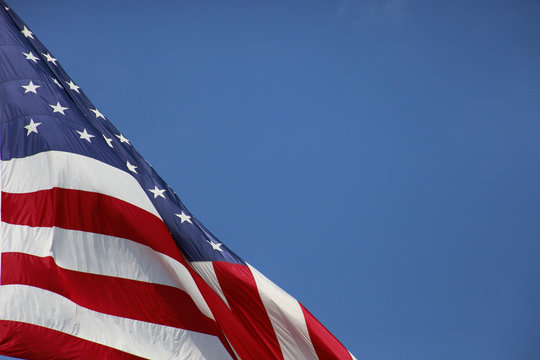U.S. Tests on Pacific: Weapons for the Future?

The United States’ (U.S.) presence in the Pacific Ocean through weapon tests, military bases and supporting ally nations radiates tension between them and the People’s Republic of China as well as North Korea and the Russian Federation once more. However, tension between U.S. and China stands as a greater risk for further confrontations or even a potential war between them. Some professionals and academics predict a future confrontation around 2030 between these two nations revolving around multilayered issues and as well as their statues over Taiwan.
Furthermore, it is impossible to overestimate the Pacific region’s strategic significance from an economic, political and military standpoint. There are four things at risk: supremacy in developing technologies over arms, access to precious resources, protecting U.S. allies which makes Taiwan an important point in the region and control over important sea routes. With its extensive history in the area, the U.S.’ views itself as a stabilising factor that protects international standards and guarantees freedom of navigation. But China’s aggressive territorial claims and quick military modernization have put the U.S. supremacy under strain, resulting in a string of tense confrontations, uncertainty and brinkmanship. To fill these gaps U.S. continued to conduct various tests and drills especially on developing technology on arms and to intimidates its potential rivals n the region.
In light of these, in an effort to stay competitive with China and Russia in the race for hypersonic weapons, the U.S. Air Force successfully tested an air-launched missile in the Pacific Ocean. This test emphasises the strategic importance of hypersonic technology in contemporary warfare, as does North Korea’s statement of a successful test of a hypersonic missile engine. China is understood to see the test as a declaration from the U.S. that it will continue to retain its strategic position in the Pacific Ocean. Implication of these recent tests sends a strong message to the U.S.’s rivals especially its biggest one, China.
In details, U.S. Air Forces developed and tested an Air-Launched Rapid Response Weapon (ARRW) carried by a B-52 bomber plane departing from Guan which is an organised, unincorporated U.S. territory located in the western Pacific Ocean’s Micronesia subregion.[1] These tests are being conducted at a time when the Pentagon is under growing pressure to stay competitive and responsive in the race for hypersonic weapons, particularly in light of recent developments on these technologies involving arms made in this area by China and Russia. This hypersonic arms sector is usually considering an area which is highly dominated by China, however, recently it is obvious that the U.S. wants to show its presence more dominantly in this sector.
Furthermore, the ARRW is designed to strike high-value targets while quickly changing and choosing land targets. Moreover, according to the official announcement, the hypersonic missile test took place at the Reagan Test Site on Kwajalein Atoll in the Marshall Islands, which is located around 1,600 miles (2,600 km) east of Guam. ARRW experiments have been carried out in the past off the US mainland. The ARRW is made up of a hypersonic glide vehicle with a conventional warhead and a rocket booster motor. According to a 2021 Defence Department paper, it is “intended to attack high-value, time-sensitive, land-based targets“.[2] Implications and developments on the geopolitics of these kind of weapons took bases on various issues and unresolved standing political problems. These tests comes from a risk factor of China’s leading sector over the hypersonic missiles and Pentagon realizes this future risk to avoid overall.
One huge issue connected to that is Taiwan which is one of the hotspots in this intricate geopolitical chess match between the U.S. and China. One of the most delicate topics in U.S.-China relations is still Taiwan’s status. The U.S. maintains a strong relation and a direct focus with Taiwan, including military assistance and arms sales, even though it formally follows a “One China” policy. Any action by either party that puts the Taiwan Strait’s current state in jeopardy might lead to a serious crisis or a direct conflict with far-reaching effects on the globe. Analysts and experts caution that there is less time to manage tensions between the U.S. and China. Any sorts of escalation might start the fires of a bigger conflict which might engulf not just the region but the globe itself.
Essentially, the changing dynamics in the Pacific Ocean area, exemplified by China’s aggression and the U.S.’ strategic manoeuvres, highlight the fragile power balance and the possibility of war escalation. The unsettled status of Taiwan and recent developments in hypersonic weaponry are the main points of this geopolitical chess match, where a single mistake might have disastrous results. Given the potential worldwide repercussions and reactions of a confrontation between these large powers in general, it is vital that diplomatic measures be made immediately to reduce tensions. Going forward, maintaining peace and stability in the Pacific and reducing the likelihood of a wider confrontation will need a concerted commitment to communication, de-escalation, and respect to international rules. Basically, U.S. aims to keep the balance over the Pacific while seeking domination on certain technological and power dynamics to make its rivals, especially China, to be less anxious to take on the allies and interest of the U.S. while political tension arises. There should be more of a cautious approach to such risk factors or a war awaits these two giants in the horizon.
By The World Forum on Peace and Security
[1] https://economictimes.indiatimes.com/news/defence/race-for-fastest-weapon-heats-up-as-us-air-force-successfully-tests-hypersonic-weapon-in-the-pacific/articleshow/108676667.cms?from=mdr
[2] https://edition.cnn.com/2024/03/21/asia/us-tests-hypersonic-missile-pacific-guam-intl-hnk-ml/index.html



